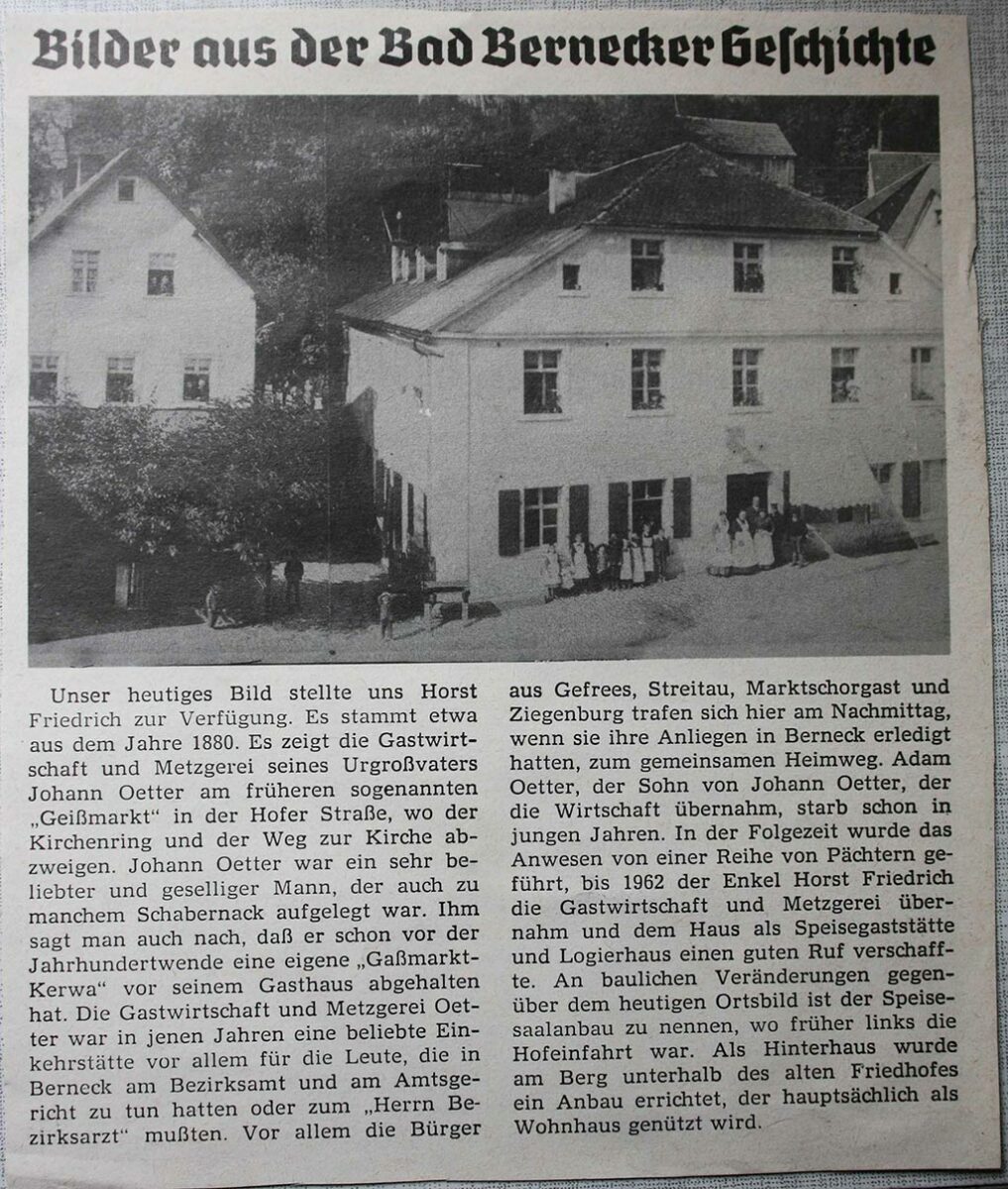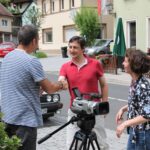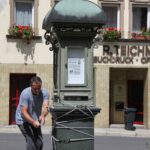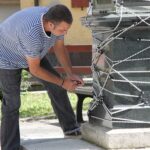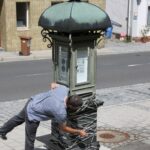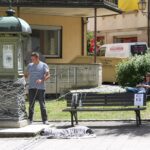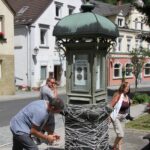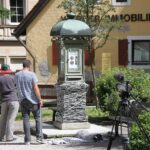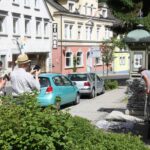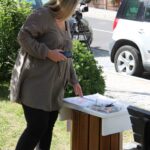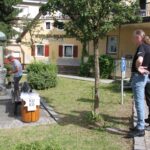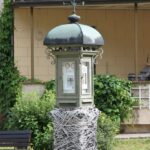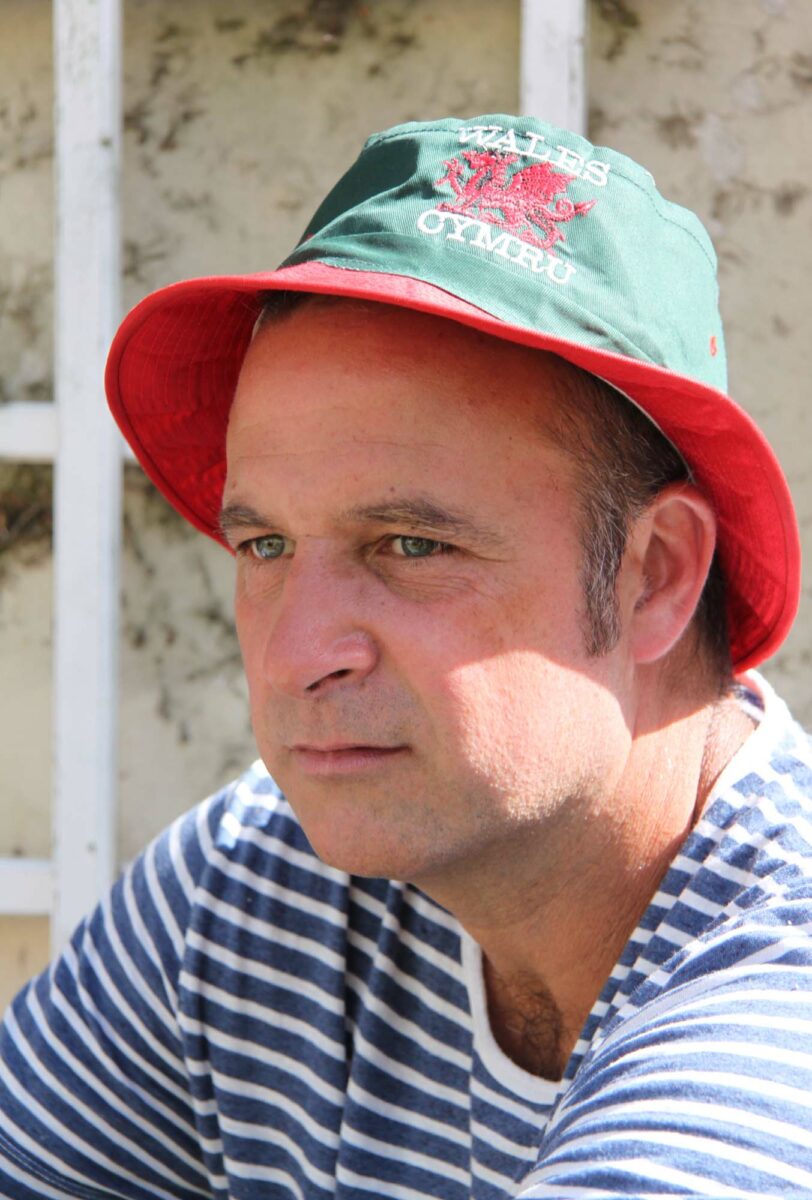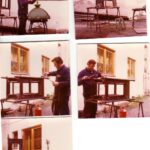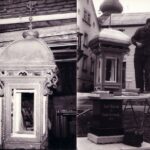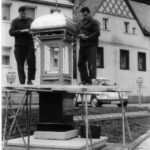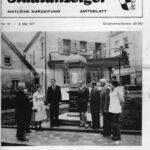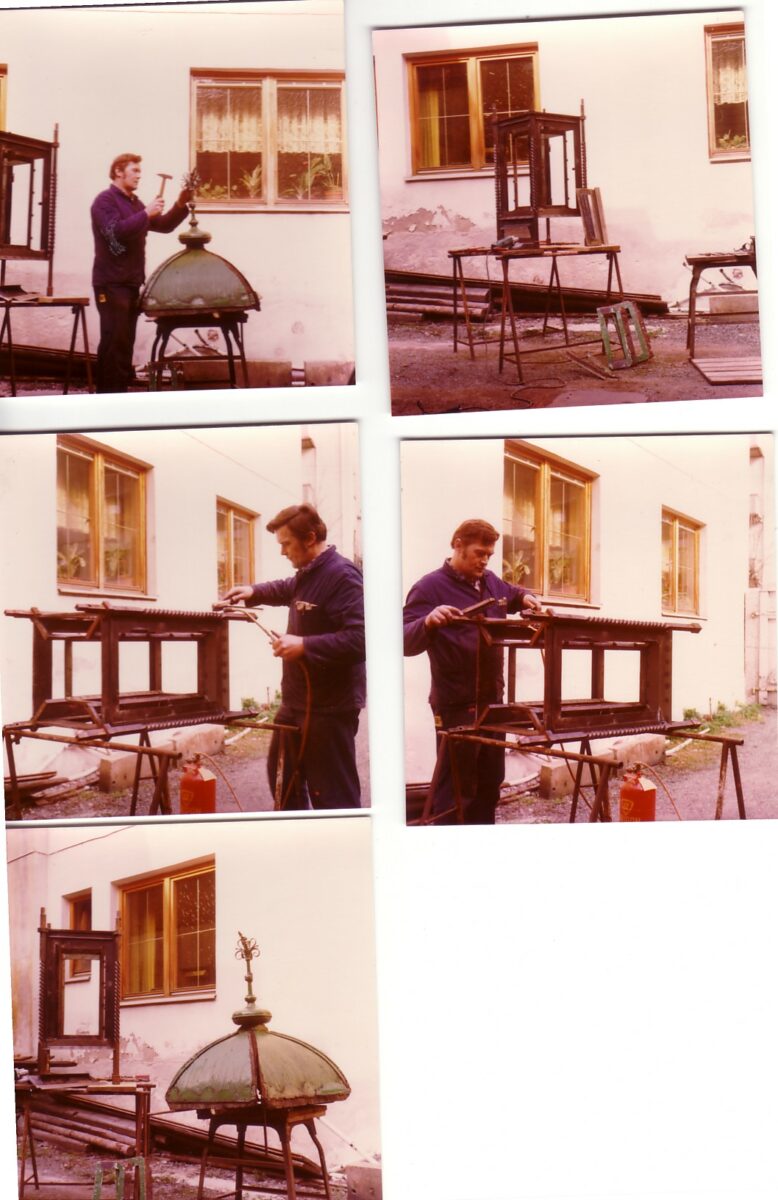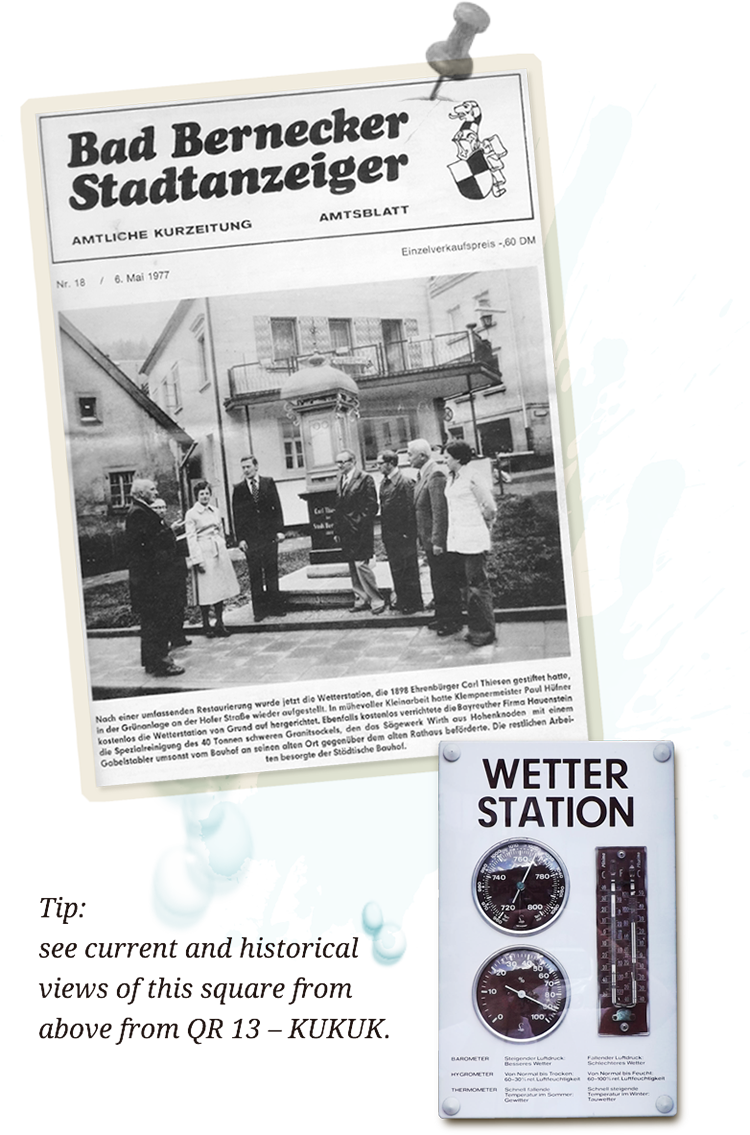
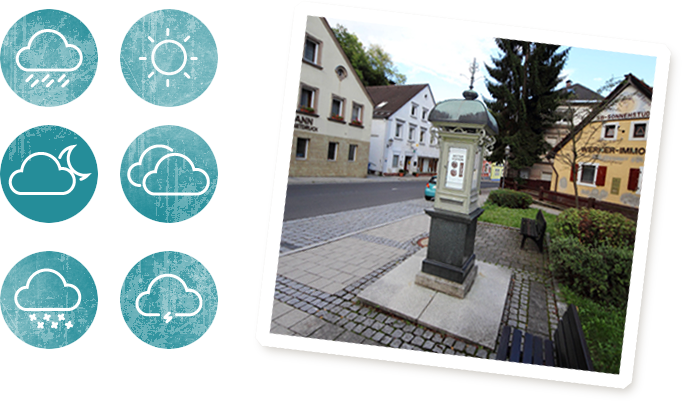
The Weather Station
How quickly we forget – not many years ago, we did not use the internet. Now we can all check global weather forecasts at the push of a button or a swipe of a screen. The internet has made it possible to stay on top of the weather without even looking out a window.
But this weather station from 1898 was cutting edge technology for its time, helping the spa guests to plan their activities and select their clothing. This piece of German engineering was expensive and hand built to precision. It was donated by the honorary citizen Carl Thiesen and extensively renovated in 1977. The weather station used to be part of the ornamental gardens through which the Knodenbach brook burbled. It was an open stream until the late 1950s, when too many spa guests had fallen into the water.
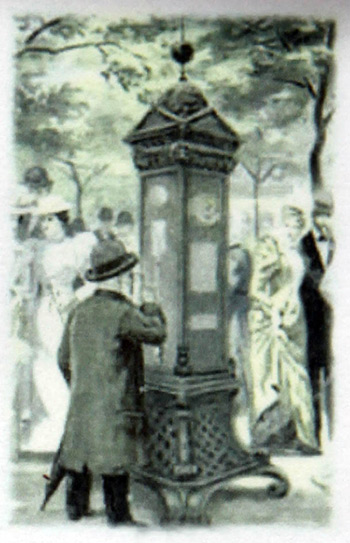 The weather station…
The weather station…
… stands on a historic square at the junction of the Kirchenring and the Hofer Strasse. Formerly the square was called the Geißmarkt (goat market), because once there was a goat market here.
The Hofer Strasse might look small, but as a federal road (B2) it has a special strategic importance for the border region between East and West – just like the Via Imperii in former times (see QR 25). During wartime, it was used by armies as well as refugees.
Everybody who arrived in Berneck had to register at the town hall. Consequently, from 1918 to 1975, the town hall of Berneck was situated at this square; today, the Gasthof Hirsch is on the site.
Magdalene Herrmannsdörfer tells the QR-Tour about her wartime experiences, when she was a small girl.
The Guesthouse Friedrich served guests from all over the region. Many people came to the town not only as tourists, but because the regional law court, county hospital and other regional facilities were based in Berneck. The renovations and extensions of Guesthouse Friedrich reflect the changes of the town.
‘Fleeting Installations’
In 2012 the weather station was chosen by the British artist Ivan Smith as a place for one of his ‘fleeting installations’. (See also Credits – Ivan Smith)
The curatorial team of KüKo and Kreativhouse had asked the visiting artist to choose a medium to temporarily mark five places in Bad Berneck to stimulate discussion with local residents and visitors to the town about town regeneration.
The intention was to take art out onto the street and engage with people in a conversation about the past, present and future of Bad Berneck.
A local resident said: great that he picked the Weather Station, it is often overlooked as a point of interest!’
Ivan Smith chose luggage straps to wrap objects around the town. He worked for several hours to wrap them with a lot of tension, after a short while of completion he then took them down again, leaving no physical marks but creating new memories about almost forgotten places.
Photos: Leo Johannes Cepera
A Finished Installation
piece by UK artist Ivan Smith, the first ‘International Artist in Residence’ brought to Bad Berneck by Kreativhouse and KüKo (see also QR 14).
Video by Sabine Gollner
1977 Repair
Photographs document the 1977 repair and reinstatement of the weather station.
Frau Herrmannsdörfer tells two stories from wartime, when she was still a little girl:
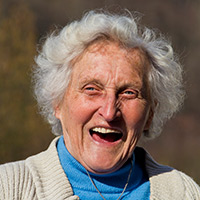
I was a young girl in the last years of the war. My parents’ house was located across from the town hall (which is the restaurant ‘Goldener Hirsch’ today), and we had a good view of refugees or soldiers arriving, because everyone had to register at the town hall. Back then the river ran openly down to the town square; today it runs underground.
Russian Soldiers
We had no television back then, not even toys, so I always watched out of the window, curious about people and the world out there.
One day I saw a group of Russian soldiers on the square – they all looked half starved; misery was great on all sides during the war. Then I noticed that one of them unpacked a hand-painted toy water mill – and I immediately knew I had to have it!
I climbed up our stove and brought down six buns, and put them into my trousers, so that they were hidden. Then I ran downstairs and asked the Russians, through gestures, whether they were hungry. Of course they were. I then pointed to the water mill and showed them the bread. They quickly agreed to the trade. My grandmother, who had been watching me from the window, was furious when I got home and she told me off. She took away the toy mill, which was covered over and over with intricate, colourful patterns.
“This dirty thing will make you sick – I’ll clean it! “ she said, and poured boiling water over the mill. I was shocked – all the precious color disappeared and the beauty was gone!
But I still kept it and tried to retrace the pattern with colored pencils.
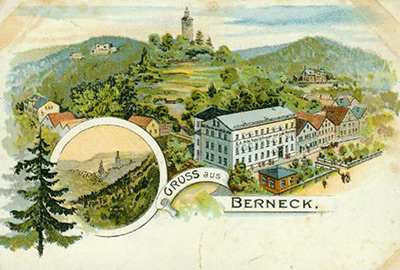
Plight of Refugees
The plight of refugees was terrible. Berneck was one of the stations where refugees coming from the east made a stop on their long journeys. They were malnourished, and had lost friends, family and all their belongings – the faces of people were drawn by grief, loss and hunger.
Deep in the winter, in the worst temperatures and in deep snow, small groups of about 10 to 20 refugees kept on arriving. They registered in the town hall (now the restaurant ‘Goldener Hirsch’), and they slept, with their children, in temperatures of minus 25 degrees outside in their wagons.
Once there was a knock in the middle of the night and a young mother stood there and asked for a warm place to nurse her 4-month-old baby.
My parents offered her the sofa, gave her a meal and let her sleep until her group had to move on.
Some of the refugees remained several months or longer, such as Ulrike Meinhof (1). She went with me to school, after the war. At that time there was only one class in which several age groups were taught together.
I later had a lot of contact with her and her family; they visited Berneck from time to time, and stayed in the sanatorium ‘Die Quelle’, in which I worked for 25 years.
But I still remember how miserable the situation of the refugees was at that time – their poverty was great.
Margarete Herrmannsdörfer, 2013
(1) Ulrike Bader-Meinhof became later known as a radical leftist terrorist in German history. As a 10 year old, in 1945, Ulrike Meinhof witnessed the arrival of the Americans in Jena and the end of the Second World War. After fleeing from East Prussia, she stayed with her mother for a year in Berneck.
Newspaper article from 1958 about Gasthof Friedrich, discussing a photograph from 1880 of the building and the people who worked there.
